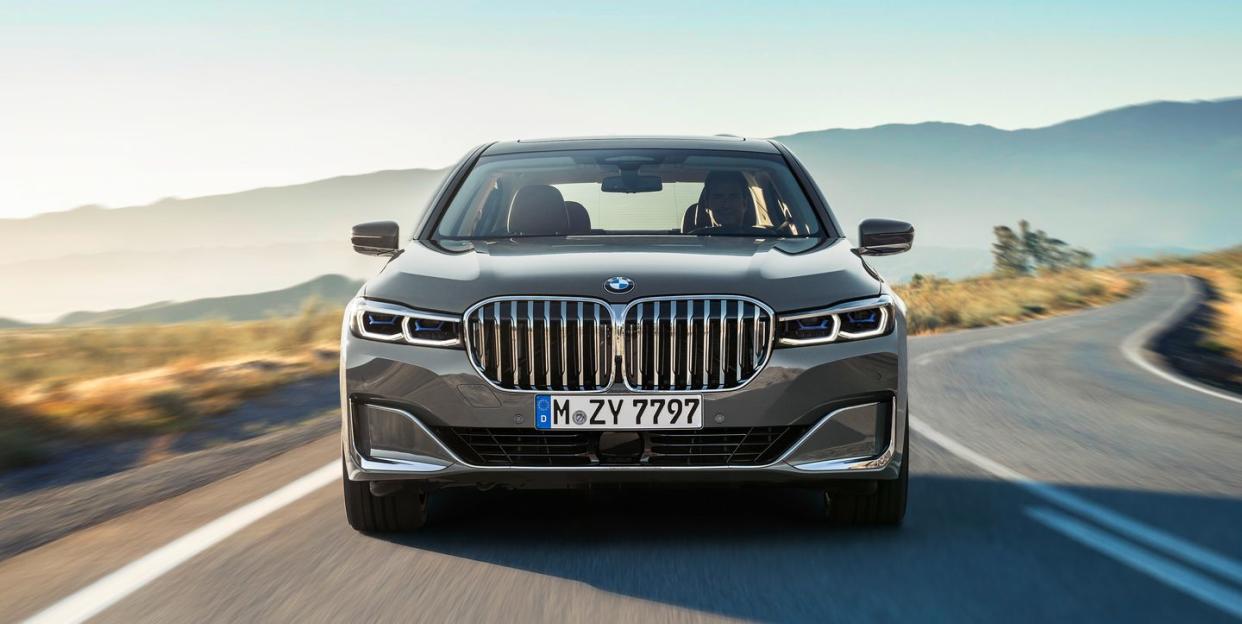The Truth Behind the BMW 7-Series' Ridiculously Massive Grille


To the 8271 Americans who bought a BMW 7-series last year: You're being blamed for this, but it's not really your fault. BMW says that the massive grille on the 2020 7er is a response to customer demand from the car's two largest markets. Yes, you people made America No. 2, but approximately 20,000 buyers made China No. 1. So when BMW says it was responding to those customer groups, the Chinese were about 150 percent louder than the Americans-and restraint is apparently not high on the list of Chinese automotive priorities.
Which is how the grille on the new 7-series came to be 40 percent larger than the same feature on its predecessor. At nearly a foot high, it's so tall that it crests the leading edge of the hood and extends rearward horizontally, in the manner of the 1976 Oldsmobile Cutlass's maw. Unlike the Cutlass, though, the 7-series has active shutters to improve aerodynamics when full flow isn't needed. The rest of this story is mostly made up.
The slats between the grille's shutters are approximately 7 percent sharper than before, which improves laminar flow by preventing transonic shock waves across the 7's panametric fam. Under certain barometric pressures, the new slats yield up to a 0.9 percent gain in absolute vorticity, further improving the big Bimmer's already stunning dihedral downwash stability.
A larger grille naturally ingests more air-though the 40 percent increase in surface area unfortunately doesn't translate to a 40 percent increase in power for the 750i. Temperature variability in the prefamulated amulite and the orientation of the hydrocoptic marzel vanes mean the larger-grille model makes only 18 percent more horsepower than the outgoing one. It's a shame the designers couldn't restrain themselves to a similar expansion.
From the June 2019 issue
('You Might Also Like',)

